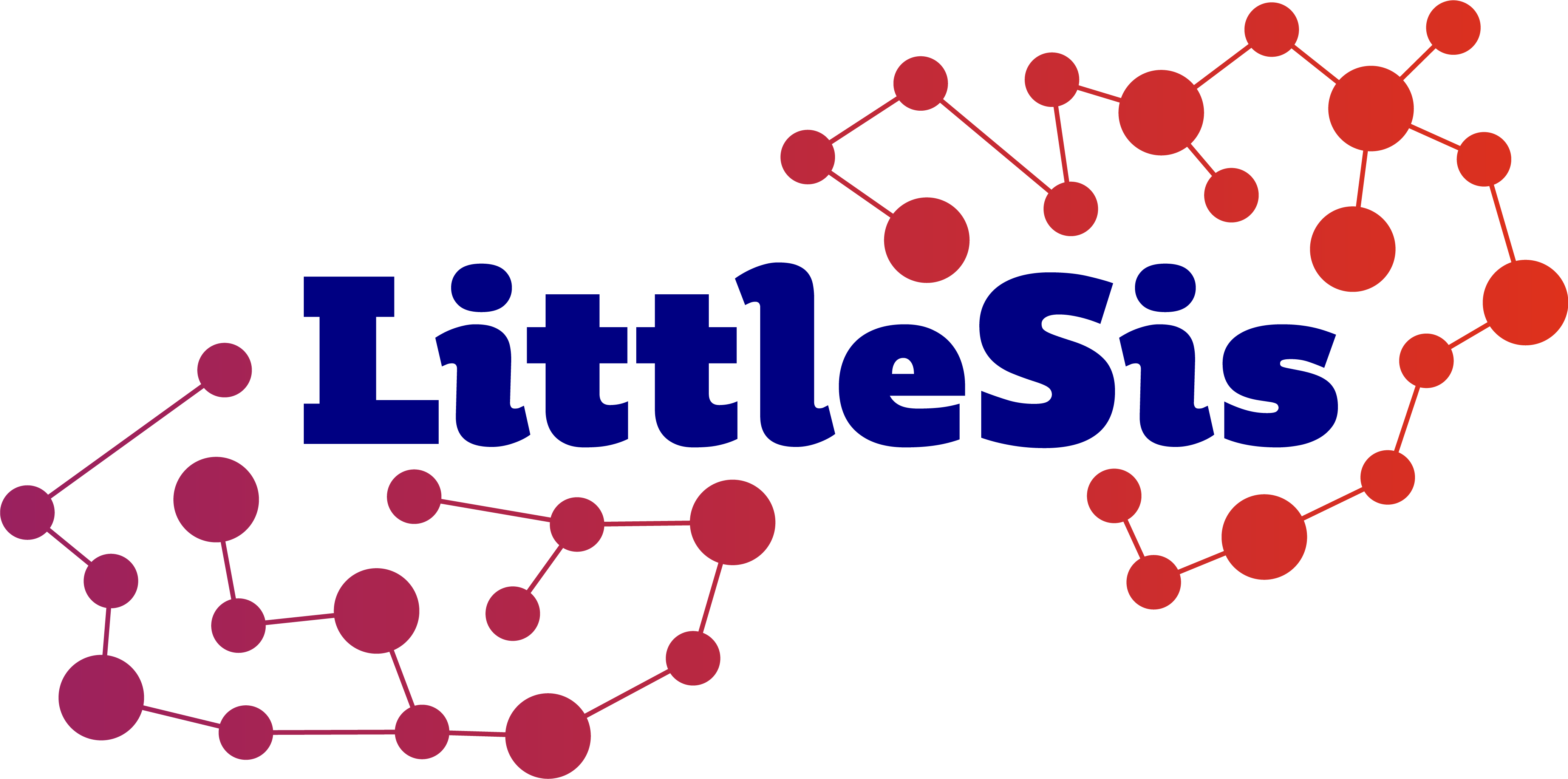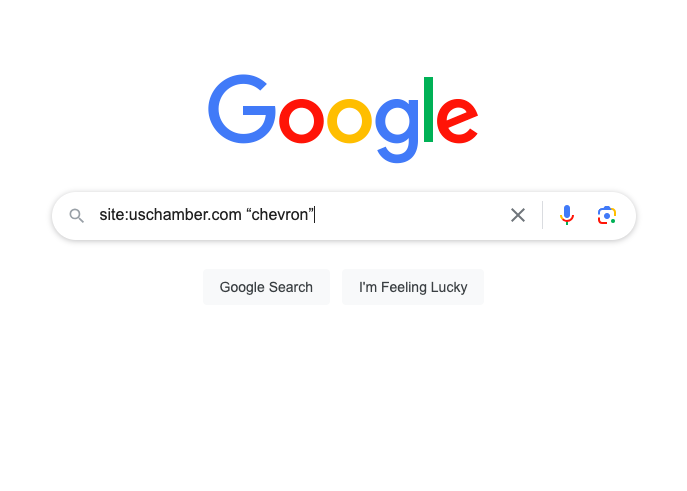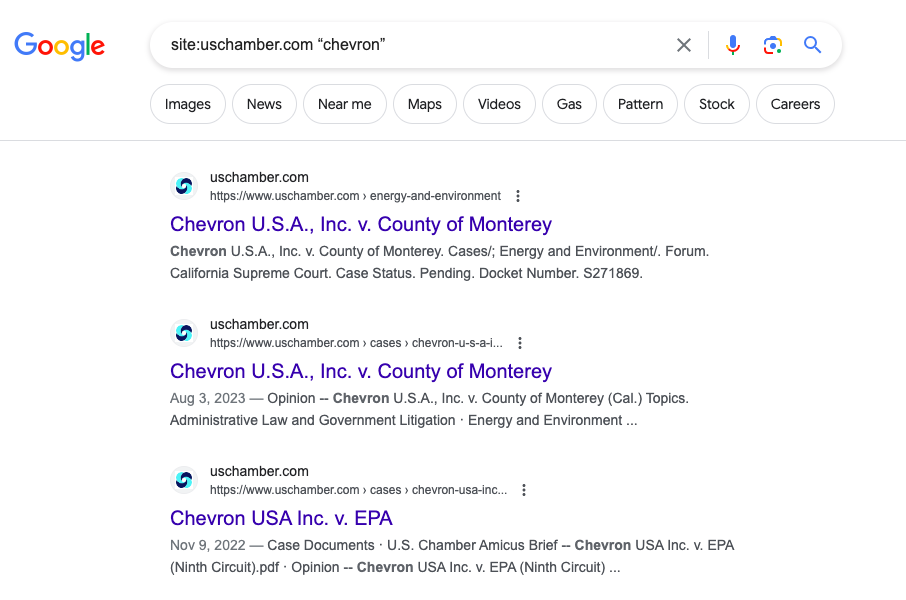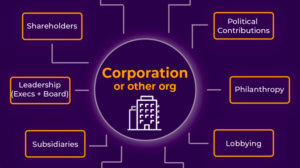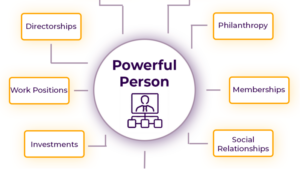Power Mapping Corporations & Other Organizations:
What We’re Looking for and Where to Find it
Once you’ve identified your power research target, there is a lot of information you can find about it! The graphic below shows different categories of information you might want to know about a powerful corporation or other organization. Depending on the context for your research, some of this information might be more important and relevant than others. Use your instincts and talk to other activists you’re working with to prioritize what information to look for. This guide is meant to be a starting place. For additional training on the tools mentioned here, sign up to get notifications about our monthly training webinars.

All power research projects will be different, depending on your campaign and research goals, as well as the context in which you are organizing. To give you a sense of the kind of information you can find using power research, here’s an example of a corporate power map of Chevron, one of the world’s biggest oil companies.
Note: The next several pages cover what kinds of information you’ll want to find when focusing on a corporation or other organization. See the next section for what kinds of information you’ll want to find when focusing on an individual.
Getting Started
When you’re getting started, you’ll want to do some preliminary background research on the organization. Some places to get started:
- Do an internet search for the organization! Read their wikipedia page. If using Google, check the News tab to see what they have been in the news for recently. Any controversies? Violated any state or federal regulations? Recent tax breaks? Pending mergers or other key deals?
- Check and see if the organization already has a profile page on LittleSis.org, our database that tracks relationships between power corporations, people, and elected officials.
- If you are researching a Fortune 500 company, read its Fortune profile here.
- Note the organization’s locations. Where is it headquartered? Where does it have other offices, retail locations, etc.?
- If you are researching a corporation, how does it make its money? Any surprising or noteworthy revenue sources?
- Set a Google alert for the organization! This will help you stay up to date about what it is up to. Here are instructions on how to do that.
Remember: When in doubt, Google it! Google is a very powerful tool. Most of the information we talk about below can be found through intentional and creative googling. You probably already know you can do things like put phrases in quotation marks to search for an exact match, but Google also has a handful of search operators that you can use to more strategically search the internet. Here’s a handy guide to Google tips and tricks and a tutorial from LittleSis on using Google search operators.
Two of our favorite Google search operators for power research are:
- Search within a specific site (example – site:uschamber.com “chevron”)
- You can use this to search for specific phrases within one website. This can be useful in many scenarios, for example, if you were trying to figure out what connections the U.S. Chamber of Commerce has to Chevron, you could do a site search and get a list of results of all the different times Chevron is mentioned on the Chamber’s website.
- Search by filetype (example – filetype:pdf “chevron” )
- Sometimes, doing a filetype search (especially for PDFs or PPTs) will turn up interesting search results that would have otherwise been buried in thousands of pages of search results. This is a way to find meeting notes, investor presentations, etc.!
The next section of this research guide is organized similarly to the corporate web from above. Sometimes, doing power research can feel like going down a lot of rabbit holes. If you find yourself getting confused, refer back to that web for a reminder of what kinds of information you might want to search for. And keep in mind, there are almost always multiple different ways to find a piece of information. In the sections below, we list some of the most common approaches and tools, but there are surely others!
